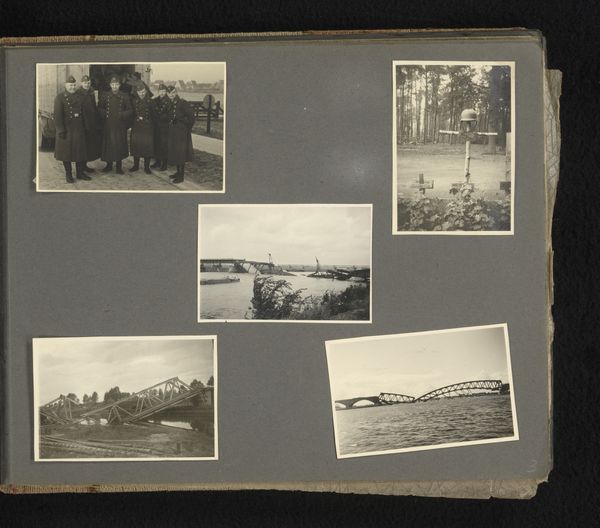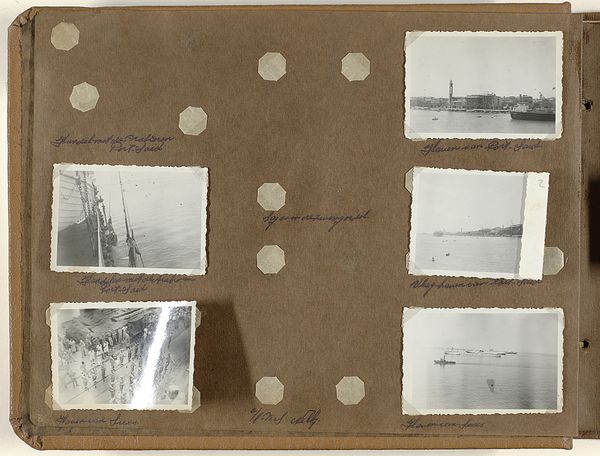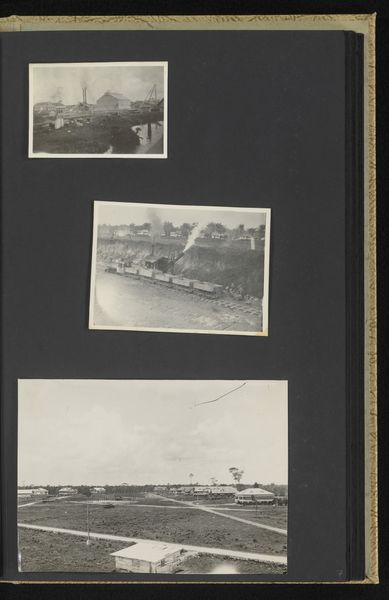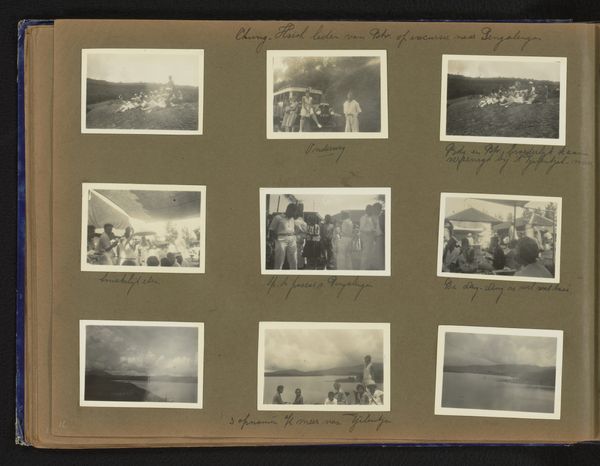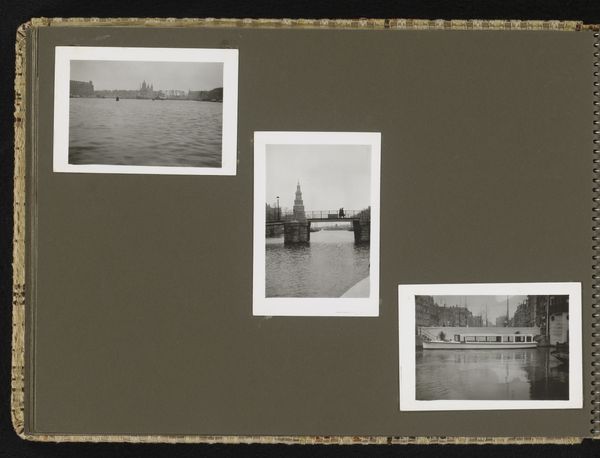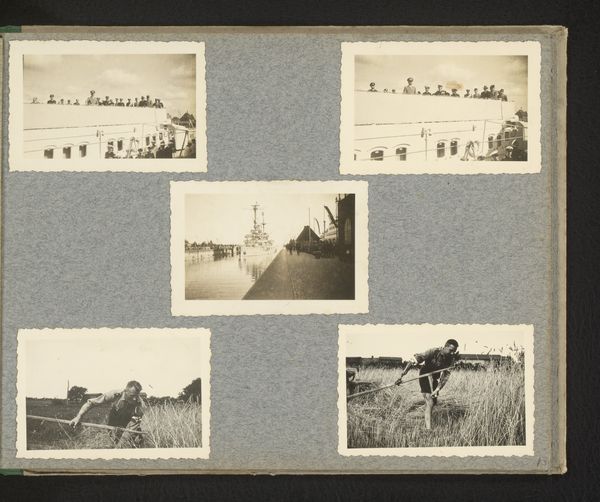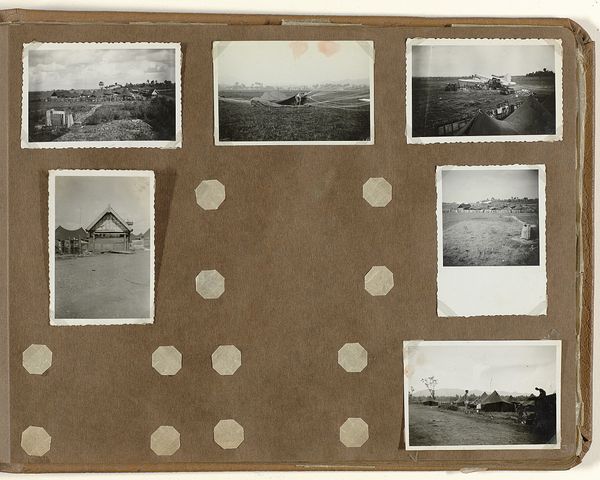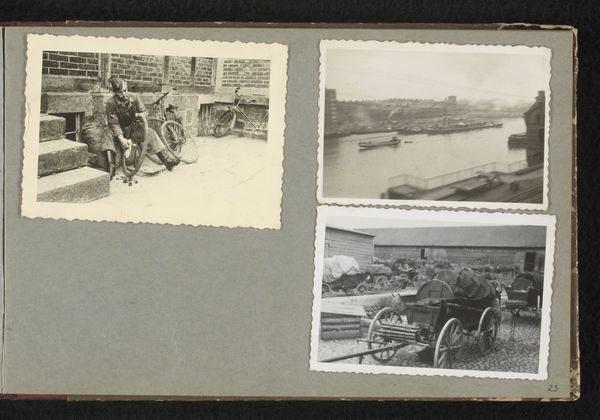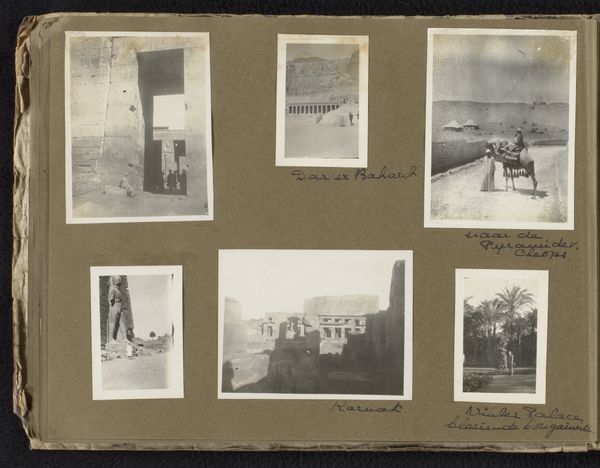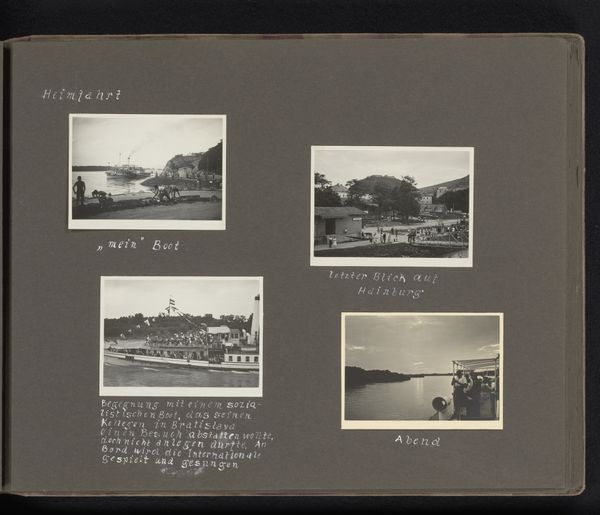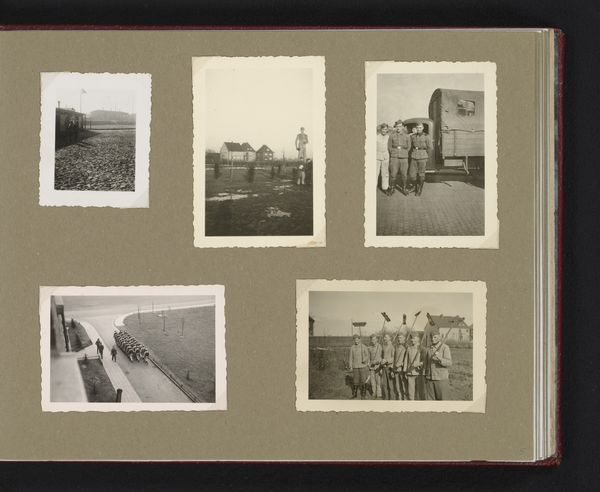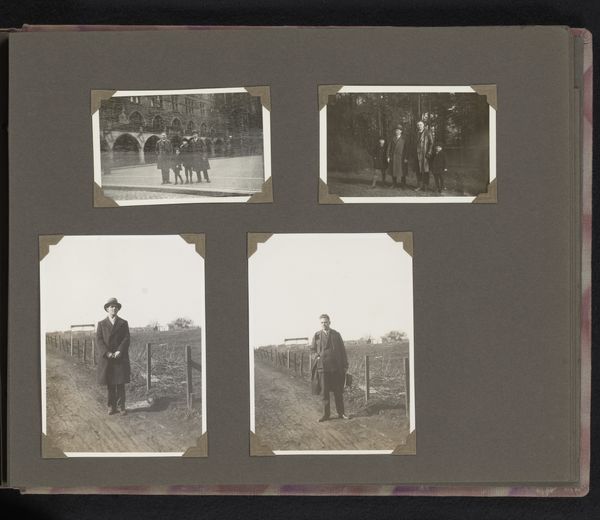
photography, gelatin-silver-print
#
excavation photography
#
landscape
#
street-photography
#
photography
#
gelatin-silver-print
#
cityscape
#
realism
Dimensions: height 60 mm, width 90 mm, height 210 mm, width 290 mm
Copyright: Rijks Museum: Open Domain
Curator: This striking set of gelatin silver prints is titled "Rotterdam en Scheveningen." The images, a collective cityscape, are attributed to an anonymous artist, and the prints date from 1940 to 1945. Editor: Instantly, I'm drawn in by the bleak, almost ghostly atmosphere. There's this stillness in each shot, yet also a palpable sense of anxiety. It reminds me of old photo albums you’d find in an attic. All that latent energy… Curator: It's fascinating that you mention latent energy because these photographs document Rotterdam and Scheveningen, probably after bombing events or during the early reconstruction. These visuals invite reflections on wartime, on public and private memory during times of national and international turmoil. Notice how the absence of bustling activity transforms familiar cityscapes into desolate terrains, reflecting the psychological impact of conflict on public spaces. Editor: Absolutely. The choice to document devastation in such an elegant way… the formal balance within each picture’s composition. This feels different. These images portray a profound emotional weight. The gray skies and hazy landscapes lend to a feeling of suspension, as if the very air is holding its breath. The emptiness is what speaks volumes here, right? The lack of people emphasizes loss. Curator: Precisely. One could view this through a trauma studies lens, considering how the documentation of urban devastation intertwines with collective memory and national identity after war. The visual language used—stark contrasts, barren landscapes, almost documentary style—conveys the erasure of everyday life. The images turn from documentary to monument of national suffering. The very anonymity of the photographer also underscores that point: who can really own pain? Editor: Hmm. Very sobering to think about. You see, for me, the composition is just the starting point. The emotional connection is much more personal. The formal austerity mirrors that lingering absence and reflects that period in the past, yet these pictures remain quite moving in our own contemporary moment. This "Rotterdam en Scheveningen" collection urges one to meditate upon what endures but also about what is lost during upheaval, about pain, resilience, and maybe the fragile beauty found even in times of profound difficulty. Curator: Indeed, art serves as a potent medium to foster public dialogues around such traumatic events and our ongoing relation with its consequences. Editor: Right, something lingers here that still deserves some attention and that should generate even more open discussion.
Comments
No comments
Be the first to comment and join the conversation on the ultimate creative platform.
